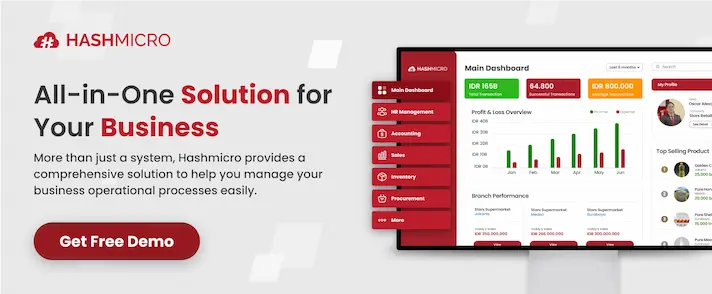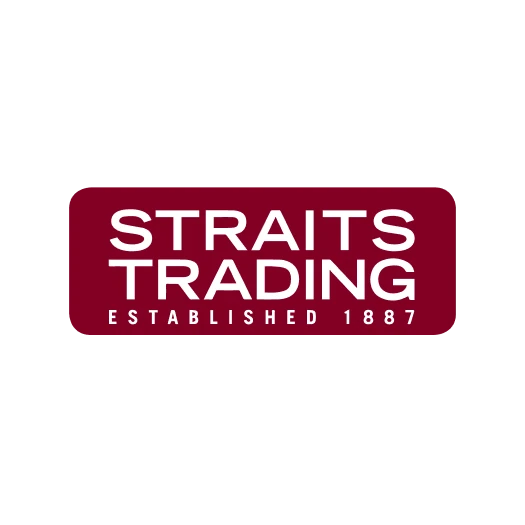A warehouse management system (WMS) is leveraging digital technology to monitor and control every process inside and outside the warehouse. It ensures operations run smoothly and efficiently by centralizing all activities.
Since warehouse operations are often prone to errors, businesses need an automated solution like HashMicro’s warehouse management system, which is designed to fit their unique requirements and reduce inefficiencies.
With CTC-Grants covering up to 70% of costs, adopting this system is more affordable than ever. Want to experience the benefits for your business? Try our free demo today
Key Takeaways
|
4 Types of Warehouse Management System (WMS)

Warehouse Management Systems (WMS) come in various types, each designed to cater to different operational needs and complexities. Here are four types of WMS systems:
1. Standalone WMS
Standalone WMS systems are specialized software solutions focused solely on warehouse management functions. They handle inventory tracking, order picking, shipping, and receiving tasks. These systems are ideal for businesses looking for dedicated warehouse management tools without the need for broader enterprise resource planning (ERP) capabilities.
2. ERP-Integrated WMS
ERP-integrated WMS is part of a broader Enterprise Resource Planning system. These systems integrate warehouse management functionalities with other business processes such as accounting, HR, and supply chain management.
This integration provides a unified platform for managing all aspects of a business, enhancing data visibility and operational efficiency across departments. Companies seeking a comprehensive solution that integrates various business functions often prefer an ERP system that includes inspections of warehouse operations.
3. Cloud-Based WMS
Cloud-based warehouse management systems are hosted on remote servers and accessed via the internet. These systems offer scalability, flexibility, and lower upfront costs than on-premise solutions.
Cloud-based WMS allows businesses to access warehouse management data from anywhere, providing real-time visibility and updates. They are particularly beneficial for companies with multiple locations or those looking to reduce IT infrastructure costs.
4. Supply Chain Execution (SCE) Suite
Supply Chain Execution suites encompass a range of functionalities beyond just warehouse management, including transportation management, labor management, and yard management.
These comprehensive systems are designed to optimize and streamline the entire supply chain from end to end. Businesses with complex supply chains or those seeking to integrate and optimize multiple logistics functions often choose SCE suites.
3 Most Used Picking Systems in Warehouse Management Systems (WMS)
There are several standard methods used in warehouses. Here are the three most used picking systems:
- Manual Picking: This is the traditional method where workers use paper lists or handheld devices to locate and pick items. It is straightforward but can be time-consuming and prone to errors.
- Automated Picking: This system uses robots and conveyors to handle the picking process. It increases efficiency and accuracy, though it requires a significant initial investment.
- Voice-Directed Picking: This method uses voice commands to guide workers through picking. It improves productivity and reduces errors by allowing workers to keep their hands free and focus on their tasks.
These systems offer different advantages and can be chosen based on a warehouse’s specific needs and resources.
Conclusion
Optimizing your warehouse operations is key to improving efficiency and reducing costs. With a powerful Warehouse Management System (WMS), you can streamline inventory tracking, order processing, and warehouse optimization in just a few clicks. Gone are the days of manual inventory checks and errors—the WMS system empowers your team to work smarter and faster.
In today’s competitive landscape, a streamlined warehouse system is essential to keep up with demand, avoid stockouts, and reduce costly errors. Don’t let outdated processes hold you back—take control of your warehouse operations now.
If you’re ready to transform your business with a smart and reliable warehouse management solution, HashMicro’s WMS system offers all the tools you need to optimize your warehouse workflow, improve stock accuracy, and increase operational efficiency. Try a free demo today and see how the HashMicro WMS system can work for you!
Warning: Undefined array key "med" in /home/hashmicr/public_html/blog/wp-content/plugins/insert-headers-and-footers/includes/class-wpcode-snippet-execute.php(419) : eval()'d code on line 281

FAQ about Warehouse Management System (WMS)
What are the four types of warehouse management systems?
The four main types of Warehouse Management Systems (WMS) are standalone WMS, cloud-based WMS, integrated ERP modules, and Supply Chain Execution (SCE) modules.What is an example of a WMS system?
An example of a Warehouse Management System (WMS) is HashMicro’s Warehouse Management System. It offers advanced features like real-time inventory tracking, automated stock management, and seamless integration with other business systems. This solution helps businesses optimize warehouse operations, improve order fulfillment accuracy, and reduce operational costs.What are the 5S in warehouse management?
The 5S methods (sort, set in order, shine, standardize, and sustain) help create and maintain an organized environment. In warehousing, continuous improvement (kaizen) focuses on collaborating with your team to find innovative solutions to challenges. HashMicro’s Warehouse Management System supports this approach by streamlining processes, ensuring efficiency, and promoting a more organized, productive warehouse operation.





































